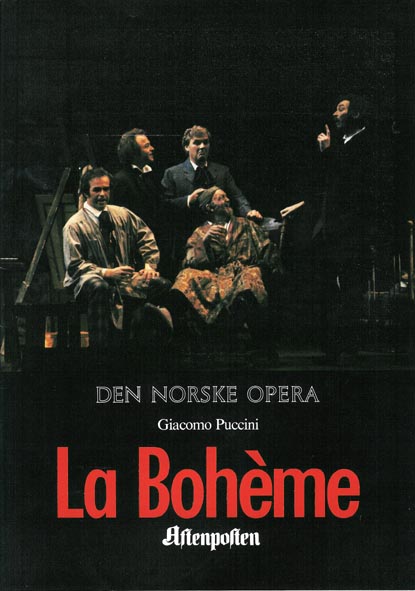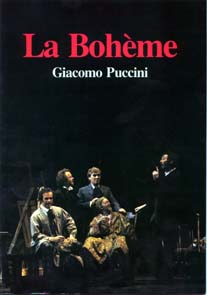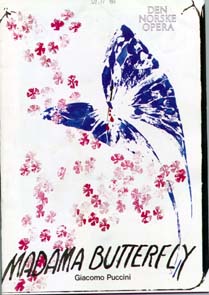2010-11-27 Manon Lescaut (Puccini),Wiener Staatsoper
Manon Lescaut = Olga Guryakova
Des Grieux = José Cura
Lescaut = Eijiro Kai
Geronte de Ravoir = Sorin Coliban
Edmondo = Ho-yoon Chung
Host = Marcus Pelz
Sergeant = Dan Paul Dumitrescu
Madrigale SIngers = Gabriella Bessenyei, Krisztina Exner, Maria Gusenleiter, Barbara Reiter
Philippe Auguin, conductor
Regie - Robert Carsen
Ausstattung - Antony McDonald
Dramaturgie - Ian Burton
Choreographie - Philippe Giraudeau
This Manon Lescaut was updated to our times. The director, Robert Carson is a clever man that respects opera, but the production is too clever for its own good. This was the 29th performance of this production but the first with José Cura as Des Grieux, Olga Guryakova as Manon, Sorin Coliban as Geronte de Ravoir and Ho-yoon Chung as Edmondo. So it was the night of 4 role debuts at the opera.
José Cura was the real event here. He was the one that made sense of it all. And he was in glorious voice, too. Olga Guryakova was a good Manon Lescaut but then it was the production. The production seemed be more about the society that is vain and cruel than about the love story between Manon and Des Grieux. Edmondo's role has been expanded. I am sure every Edmondo would love to be more onstage and sing more, and that opera houses are happy to employ one person and not 3.
Act 1. In Amiens. A *****Hotel, an avenue with glass windows of model dolls wearing expensive women's dress. Students with beer bottles. Both men and women. Edmondo is photographing the students. Then they all dance the typical MTV type dance. (gosh, that is so stupid, I am getting embarrassed as I sit and see). JOSE CURA, good-looking in black. Finally a human being. This Des Grieux is a bit naive, but can bite back, in good humor, with "Tra voi, belle, brune, bionde". Edmondo acts almost like he is Des Grieux' friend but during the performance we see that this Edmondo is no one's friend.
Then the stage coach arrives in Amiens. In this updated version it must be a train and what else people dressed up and with mobile phones. It is getting old this theme of using mobile phones to say it is our century. Old, not edgy. Manon is dressed as a young girl. Too young to be "Donna non vidi mai". Lescaut her brother (Ejiro Kai) dressed as a soldier, obviously much older than Manon. Then it was Geronte de Ravoir and his handlers. So here he is the "old man" but he does not look old. That does not make good sense. Actually we see no old people in this production. It is a new world, of course, only young people may apply. Naturally the horses in the opera has become cars. A Lexus drives the young couple to Paris. Edmondo, naturally, informs Geronte of this. In a traditional production he does it because he is a clever students who loves pranks but here Edmondo is a more sinister person. The opera is updated but the action of people is not. Would it really be possible that Geronte, the very rich man would have no other car or no other means to get a car? No.
Act 2. Paris. Geronte's penthouse apartment. Manon has many dresses and many people to help her get dressed. She is drinking champagne. Lescaut is still drinking from beer cans. Then Madrigal singers appears with naturally the videographer, sound mixer etc. Manon is making a MTV video of "Sulla vetta tu del monte". Naturally in this world of today any rich man would not only want Manon as his mistress but also to become a star. Manon is the lead singer here with the madrigalists and her back choir. It works in this production. Then Edmondo appears (the traditional Manon Lescaut's dance master is replaced with Edmondo, the photographer). Geronte has decided Manon is to be a star. So he and his friends is there to see Manon having her publicity photos shot. Good! Then they all leave and Des Grieux arrives. Wonderful duet!!! Then Geronte arrives (Edmondo took photos in secret of Manon & Des Grieux). He exists after promising to come back soon. Then Lescaut alerts them of Geronte's plan. Naturally Manon cannot leave without all her stuff. Her servant rush out with several suitcases and try to fill them with all the jewelery and dresses. Then Geronte and the "police" sergeant come. Des Grieux is detained by some of Geronte's men and Geronte sardonic with Manon. And what new opera production does not have a little rape or sexualt assault. The female servants of Manon is assaulted by "the police". O crudel mondo = showing not really necessary violence (especially towards women). No like for that!
Act 3 Le Havre. Geronte's apartment is suddenly a prison, or is it. Des Grieux and Lescaut is plotting Manon's release. Edmondo, the photographer, is singing the night watch song ("O, Kate ripose al re"). He is with Geronte. Manon and Des Grieux cannot hide from Edmondo who photographs them and so the attempt of getting Manon free is foiled. Geronte talks to the man that Lescaut has bribed and then shoots him in the back. This happens just behind the back of Des Grieux and Lescaut so it makes no sense that they have no idea what happens. Stupid production. At the role call for women exiled to America a crowd is gathering, it is Geronte's friends and some photographers. Then they come Rosetta, etc. The exiled women is dressed as models, walk like models but are handcuffed. Geronte's friends who are there for the entertainment and the photographer are taking photos of the model/prisoners. Then Manon is there, and are we really to believe that Geronte's friends does not know her and could have pity for her and believe that Des Grieux is her husband. NO. There is no sign of a harbour in this production and no ship. And the sergeant is now is captain, or. Geronte is in this production singing some of the captains lines, or so it seemed to me. Naturally Des Grieux and Manon is threatened with death by Geronte's gun. Then Manon's handcuff is off and Des Grieux can follow Manon to America....
Act 4. Near New Orleans. But in this production we are back to another avenues. They are alone except the window with model dolls is expensive dresses. Manon dies after great singing of José Cura and Olga Guryakova.
Olga Guryakova sang and acted well. "In quelle trine morbide" and "Sola, perduta, abbandonata" were very good. But the gold goes to José Cura who made it all worth while.



















